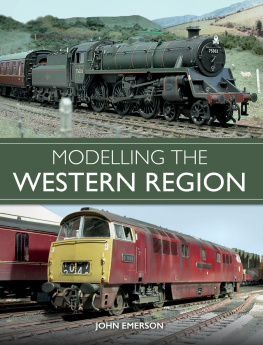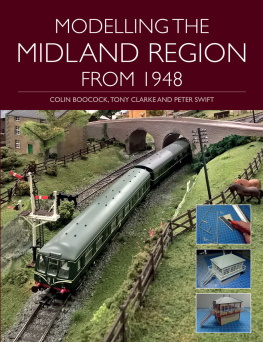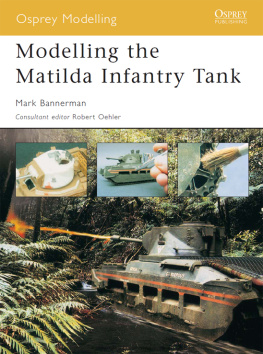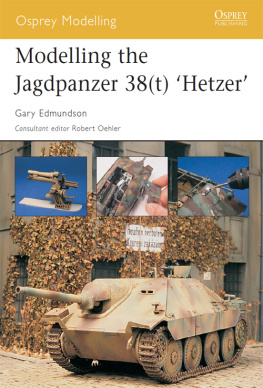John Emerson - Modelling the Western Region
Here you can read online John Emerson - Modelling the Western Region full text of the book (entire story) in english for free. Download pdf and epub, get meaning, cover and reviews about this ebook. year: 2019, publisher: The Crowood Press UK, genre: Romance novel. Description of the work, (preface) as well as reviews are available. Best literature library LitArk.com created for fans of good reading and offers a wide selection of genres:
Romance novel
Science fiction
Adventure
Detective
Science
History
Home and family
Prose
Art
Politics
Computer
Non-fiction
Religion
Business
Children
Humor
Choose a favorite category and find really read worthwhile books. Enjoy immersion in the world of imagination, feel the emotions of the characters or learn something new for yourself, make an fascinating discovery.
- Book:Modelling the Western Region
- Author:
- Publisher:The Crowood Press UK
- Genre:
- Year:2019
- Rating:3 / 5
- Favourites:Add to favourites
- Your mark:
- 60
- 1
- 2
- 3
- 4
- 5
Modelling the Western Region: summary, description and annotation
We offer to read an annotation, description, summary or preface (depends on what the author of the book "Modelling the Western Region" wrote himself). If you haven't found the necessary information about the book — write in the comments, we will try to find it.
Modelling the Western Region — read online for free the complete book (whole text) full work
Below is the text of the book, divided by pages. System saving the place of the last page read, allows you to conveniently read the book "Modelling the Western Region" online for free, without having to search again every time where you left off. Put a bookmark, and you can go to the page where you finished reading at any time.
Font size:
Interval:
Bookmark:

MODELLING THE
WESTERN REGION
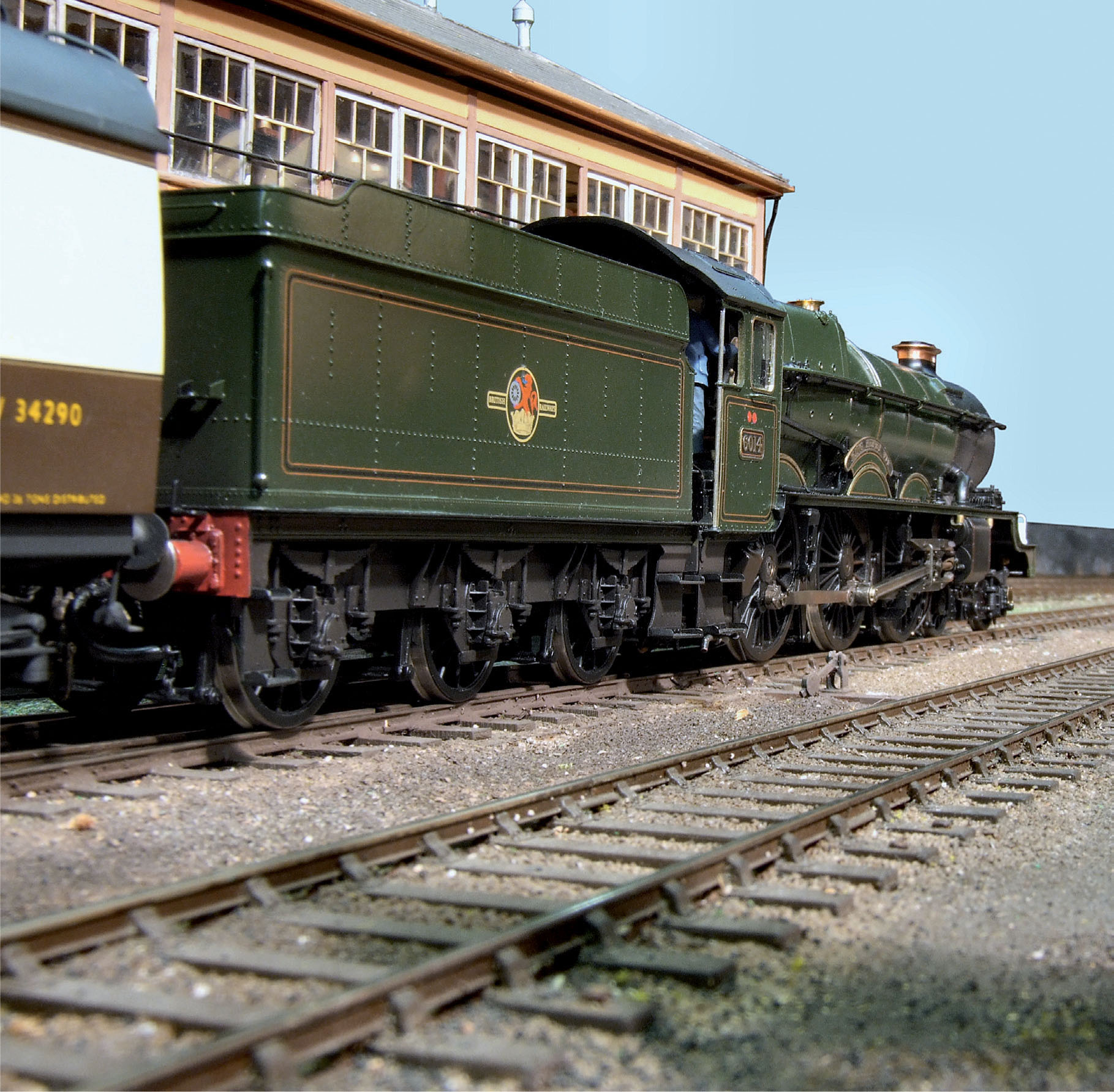
Ready for the road King class 4-6-0 No. 6014 King Henry VII awaits departure under the watchful eye of the signalman on the 7mm-scale Bangor layout. TONY WRIGHT, COURTESY BRM
MODELLING THE
WESTERN REGION
JOHN EMERSON

THE CROWOOD PRESS
First published in 2019 by
The Crowood Press Ltd
Ramsbury, Marlborough
Wiltshire SN8 2HR
www.crowood.com
This e-book first published in 2019
John Emerson 2019
All rights reserved. This e-book is copyright material and must not be copied, reproduced, transferred, distributed, leased, licensed or publicly performed or used in any way except as specifically permitted in writing by the publishers, as allowed under the terms and conditions under which it was purchased or as strictly permitted by applicable copyright law. Any unauthorised distribution or use of this text may be a direct infringement of the author's and publisher's rights, and those responsible may be liable in law accordingly.
British Library Cataloguing-in-Publication Data
A catalogue record for this book is available from the British Library.
ISBN 978 1 78500 528 2
Acknowledgements
My sincere thanks for help and assistance with photographs to Simon Kohler and Hornby Hobbies, Dennis Lovett of Bachmann Europe plc, Paul Chancellor at ColourRail, Frank Dumbleton of Didcot Railway Centre, Paul Bason, and of course my colleague during our time with BRM, Tony Wright. Thanks are also due to Mick Nicholson for his invaluable help over the years with my various queries about signalling matters.
CONTENTS
PREFACE
In the course of a year we see a large number of model railway layouts at exhibitions, private displays, clubrooms and houses and, although we have no figures to hand, it seems to us that more modellers base their layouts on Great Western or Western Region practice than on that of any other company. Not my own words, but those of G. M. Kichenside, editor of the much missed Model Railway Constructor back in April 1963. Since those words were written, of course, the Western Region has long vanished, along with the steam engines that had reigned supreme upon it for so long, the diesel hydraulics that enjoyed a much briefer life and the factory that built them and almost everything else for the Western Region Swindon, home of the Gods!
Some half a century later, the railway modellers enduring enthusiasm for the Great Western Railway (GWR) and its successor the Western Region (WR) shows little sign of abating. The picturesque GW branches that lasted until given their death sentence in the Beeching Report coincidentally also published in 1963 still remain popular subjects for smaller layouts. My own latest modelling project is based on Brimscombe, situated on the climb up to Sapperton Tunnel through the Golden Valley, and over which the famous Cheltenham Spa Express ran. Manufacturers continue to produce ever more realistic models of the products of Swindon in all scales, as well as the various British Rail (BR) standard locomotive types, diesel electrics and diesel multiple units (DMUs) that were such a familiar everyday sight over all parts of the WR until its ultimate demise in 1992.
Although its impossible in a mere two hundred or so pages to cover every facet of modelling the Western Region, its rolling stock, infrastructure and operations, my hope is that this book will go some way to inspiring and informing everyone who seeks to model the Glorious Western Region.
John Emerson
Heckington
April 2018
CHAPTER ONE
THE WESTERN REGION
AN INTRODUCTION
Depending upon your point of view, the former Great Western Railway was either Gods Wonderful Railway or the Great Way Round. Brought up in 1950s Cheltenham, where the famous Cheltenham Flyer began its high-speed journey to Paddington going in the opposite direction at a crawl behind a tank engine I still incline to the former. Amongst all of the Big Four companies formed as a result of the 1921 Railways Act, the GWR was the only one that did not have to deal with the problem of uniting a group of similar-sized railway companies into one larger whole the Great Western did not even have to change its name. Amongst the Big Four railway companies brought about by the Grouping, the GWR alone could boast an unbroken history stretching from its conception in 1833, through amalgamation and absorption of other lines in 1922, and up to its demise upon nationalization in 1948.
Throughout the post-war austerity years of the 1950s, and well into the early 1970s, some of the most popular layouts at shows and in the model press were branch lines of GW or WR origin so much so that, indirectly, this led a group of disgruntled modellers forming the LMS Society in protest. The WR was arguably fortunate in that, unlike some of the more austere lines of other regions, it had inherited many branch lines that went to popular and well-publicized seaside holiday destinations such as Newquay, Brixham and Kingsbridge all with backdrops of attractive scenery. Some, such as Minehead and Kingswear, were engineered to main-line standards and capable of taking some of the heaviest locomotives. Many of these stations were relatively small, or their track plan could be reduced to fit the restricted space available to modellers. With a fair amount of published information from the likes of Michael Longridge in the Model Railway Constructor, the layout plans of Cyril Freezer in the Railway Modeller and a limited amount of readily available locomotives and rolling stock from the trade in the decades of austerity following the war years, it made sense to model a small scheme where something like an auto-tank and trailer were the mainstay of services.
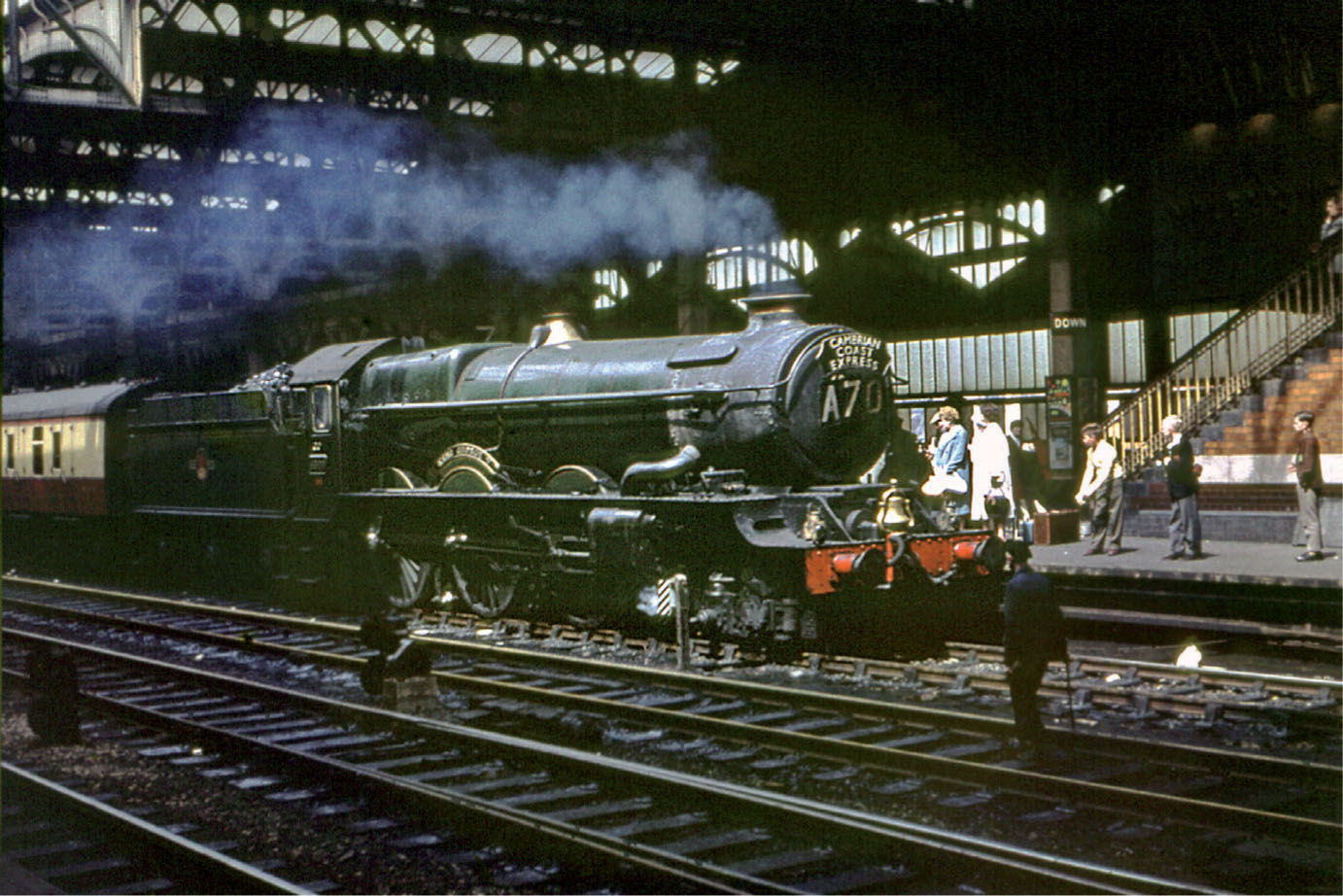
Regal splendour shafts of sunlight highlight doyen of the King class No. 6000 King George V arriving with the up Cambrian Coast Express at Birmingham Snow Hill. G. PARRY COLLECTION/COLOURRAIL
However, the newly created WR was not just about picturesque branch lines. The main routes from London ran from Paddington to Bristol Temple Meads over the easily graded route known as Brunels Billiard Table, over the steep Devon banks to Plymouth and Penzance in the south-west with its heavy summer holiday traffic, Neyland and Fishguard on the Welsh coast with ferry connections to Ireland, through Banbury, Birmingham (Snow Hill), Wolverhampton (Low Level) and Shrewsbury to North Wales, as well as routes to Weymouth, Salisbury and Basingstoke. Western Region locomotives could even be regularly seen at Crewe in the heart of London Midland Region territory.
A procession of famous-named trains left Paddington each day heading for various destinations. The Torbay Express, Mayflower, Royal Duchy and Cornish Riviera headed for south-west holiday haunts, The Inter-City and Cathedrals Express served Birmingham and the Midlands, the Red Dragon and Capitals United ran to Cardiff and Swansea, while The Cambrian Coast Express journeyed via Wolverhampton (LL) and Shrewsbury to Aberystwyth and Pwllheli. Other named trains running over the Western Region included the Cheltenham Spa Express, Merchant Venturer and The Cornishman, all running from the mid-1950s in the revived but not
Font size:
Interval:
Bookmark:
Similar books «Modelling the Western Region»
Look at similar books to Modelling the Western Region. We have selected literature similar in name and meaning in the hope of providing readers with more options to find new, interesting, not yet read works.
Discussion, reviews of the book Modelling the Western Region and just readers' own opinions. Leave your comments, write what you think about the work, its meaning or the main characters. Specify what exactly you liked and what you didn't like, and why you think so.

